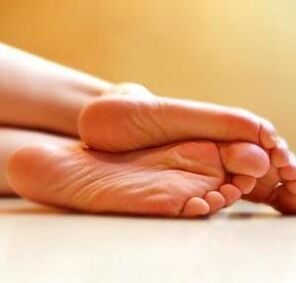Arthrosis is a pathology that occurs in a joint due to the destruction of the cartilage tissue that covers the heads of the bones that enter the joint. Osteoarthritis can develop in the joints of the limbs and spine, especially often the disease affects the knee joint (gonarthrosis) and the hip joint (coxarthrosis).
It is also important to understand what arthrosis is in order not to aggravate the development of the disease with improperly taken measures.
Causes of arthrosis

Basically, the causes of arthrosis of the joints are associated with the aging of cartilage cells, therefore arthrosis disease in most cases is diagnosed in elderly people. Excessive stress also leads to premature aging of the joint. Athletes and people who are constantly involved in hard physical labor are also at risk.
In addition, the causes that led to arthrosis are often associated with insufficient nutrition of the joint or slowed metabolism in it. This can be the result of joint injury or impaired blood supply to the periarticular tissues.
The destruction of cartilage tissue can also provoke a disease such as psoriasis, in this case, doctors observe a specific form of psoriatic arthrosis: the skin of the diseased joint is covered with psoriatic plaques, the skin becomes grayish.
Lingering inflammation (arthritis of the joint) can cause arthrosis of the joints; a prolonged inflammatory process in the joint without proper treatment threatens a complicated form of deforming arthrosis.
Excess weight can also be the culprit for the development of the disease, since the more body weight, the greater the constant load on the joints.
Studies have also shown that a genetic factor is sufficient for the occurrence of arthrosis. So, for example, the disease of arthrosis of the interphalangeal joints of the hands in women occurs 10 times more often.
Symptoms
Frequent symptoms that indicate the occurrence of arthrosis of the joints are pain syndrome and stiffness of movements.
Pain syndrome with arthrosis in most cases occurs at the time of load on the joint, and at rest, the discomfort disappears. Also, pain can occur with sudden movements or turns, while it is short-lived and reappears only with the next awkward movement. These signs of arthrosis are sufficient reason to immediately consult a doctor.
In advanced stages, the pain syndrome can become permanent. Also, over time, symptoms such as crunching in the joints and a feeling of muscle tension around the joint may appear. Skin rashes in the joint area characterize psoriatic arthrosis.
Types of arthrosis
Depending on which joint of which part of the body was affected, arthrosis is:

- hip joint;
- knee joints;
- hands;
- spine;
- stop.
Psoriatic arthrosis mostly affects the knee joints and joints of the hands.
There are four stages of arthrosis, the fourth stage is also called deforming arthrosis, when pathological changes in the joint become irreversible, the joint itself is practically destroyed and ceases to perform its functions.
If the pathology has affected several joints at the same time, polyarthrosis is diagnosed.
Psoriatic arthrosis is diagnosed when the usual symptoms of arthrosis are complemented by specific skin rashes.
Diagnostics
It is almost impossible to make the correct diagnosis, and even more so to prescribe adequate treatment on your own. The most likely way would be to see a doctor. Modern diagnostic methods allow the specialist to apply the most optimal direction of treatment.
The main types of diagnostics
- X-ray: the picture shows the degree of joint deformation;
- laboratory tests: confirmation of the presence of a pathological process in the joint will be an increased ESR in the blood;
- analysis of synovial fluid and histological examination of synovia: allows the doctor to determine the presence of pathological formations in the joint.
Also, the doctor needs to examine and palpate the affected joint. So, a visual examination will reveal signs of psoriatic arthrosis. Only an integrated approach to the study of test results can give a real picture of the disease and confirm the diagnosis.
Onset and course of the disease
The onset of arthrosis, as a rule, goes unnoticed for the patient, the pain in the first stages of the disease is barely perceptible and does not bring any significant concern. The first thing that patients usually feel is a feeling of discomfort after a long stay at rest, for example, short-term stiffness of the joints in the morning. Over time, the connection between physical activity and pain in the joint begins to be traced. Mild pain with exertion begins to intensify. In subsequent stages, pain can also be troubling during periods of rest, at night. Pain sensations in arthrosis differ in their frequency, intensifying during periods of exacerbation, they may not appear at all during periods of remission.
For the most part, patients go to the doctor when there is already a very pronounced pain syndrome and limited movement, which makes it impossible to lead a normal life. The advanced stage of arthrosis is also indicated by symptoms such as lameness and subluxation of the joints, the occurrence of which is associated with the presence of large deformities in the joint and deterioration of the cartilage tissue.
Treatment

The earlier therapy is started, the more chances are that the joint will begin to function fully again, although modern medicine is not talking about the complete disappearance of the disease. The main factors in the treatment of arthrosis are its complexity and consistency. The doctor needs to take into account many different factors: the stage of the disease, the specifics of the clinical picture, the causes of its occurrence, and take into account how impaired the function of the musculoskeletal system is. If acute arthrosis is diagnosed, then treatment begins with the appointment of drugs that relieve pain.
The treatment takes place in three stages:
- Relief of tension from the joint.
- Relief of synovitis.
- Rehabilitation and preventive measures aimed at slowing down the further development of the disease.
In each case, an individual approach is required. Medicines affect each organism with varying degrees of effectiveness, in addition, the tolerance and side effects of such drugs must be taken into account. In many cases, the disease develops against the background of an infection already present in the body. So in the case of psoriatic arthrosis, measures are taken to eliminate psoriasis.



















